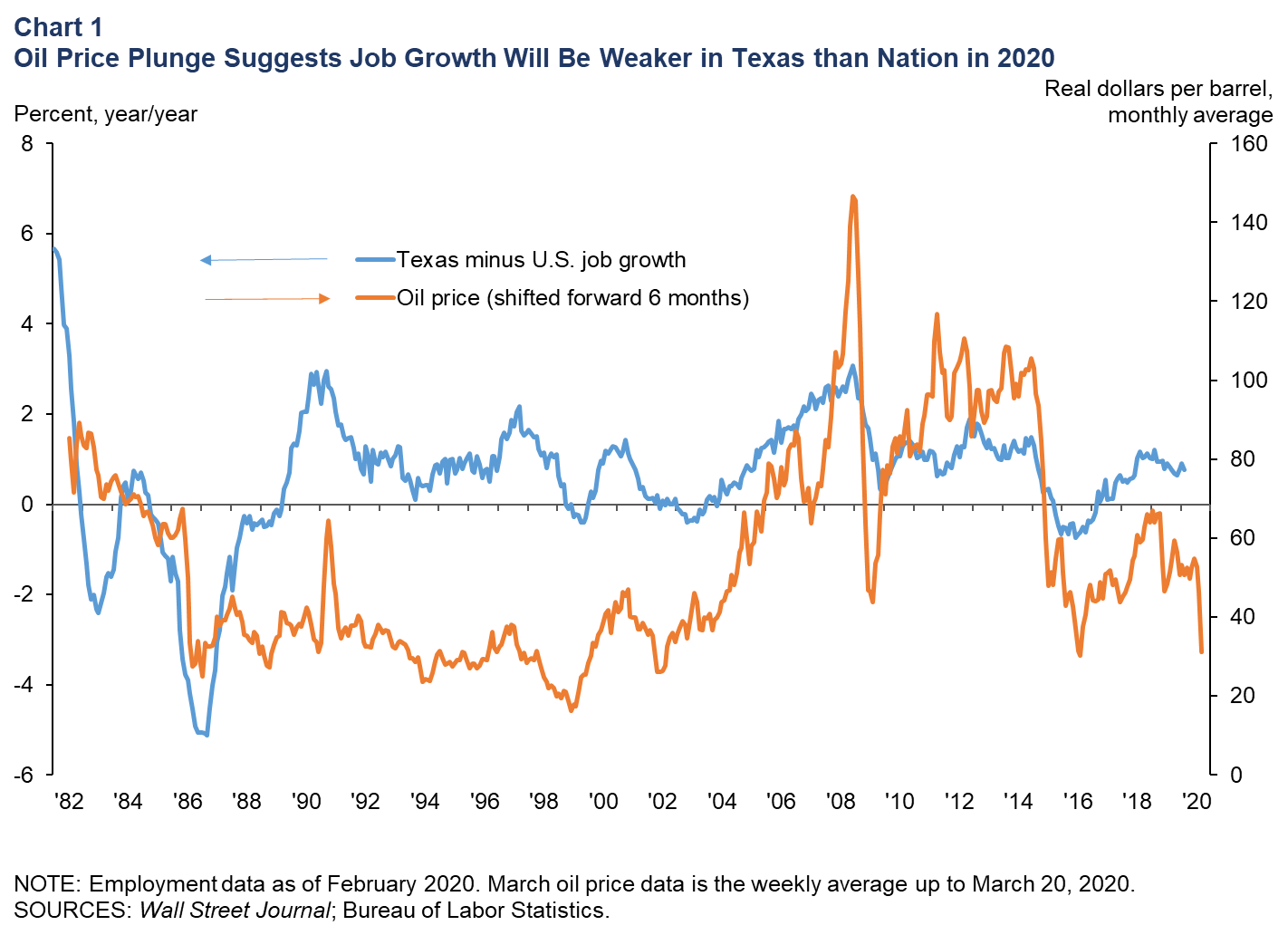Texas Employment Forecast

March 27, 2020
Texas jobs grew 3.4 percent in February and 3.5 percent for the first two months of 2020, indicating a strong pace of growth prior to the economic shock caused by the coronavirus (COVID-19). Some components in February’s Texas Leading Index (TLI), such as oil and stock prices, were negatively impacted by the beginnings of the spread of the virus, but overall, the index does not yet reflect the severity of the shock. In February, the TLI fell at an annual pace of 16.1 percent—its largest decline since January 2016. The index will likely fall more sharply in March.
Recent increases in initial claims for unemployment insurance in Texas suggest large job losses in mid-to-late March. Initial claims increased by 4,044 for the week ending March 14 and by 127,452 for the week ending March 21. The combined increase represents about 1 percent of all nonfarm jobs in the state, although it is likely that the number of newly unemployed is much higher. Recent reports suggest that potential claimants have overwhelmed the Texas Workforce Commission’s phone lines and website and that this has delayed the number of claims filed.
There is currently a high degree of uncertainty surrounding how the virus will play out in the months ahead. Thus, there is a very wide range of estimates of its economic effects on the nation and Texas. In the weeks ahead, when the data become clearer on the pattern of infection and the specific policy actions taken to reduce its impacts, we hope to provide more information on the likely path of the Texas economy.
In the meantime, we know that the energy sector, which represents a significant share of the state’s economy, is likely to suffer a major decline this year. A good rule of thumb for oil prices and Texas job growth in the current situation is that when oil prices fall below the breakeven price for new drilling (about $49 per barrel) and remain there for some time, state job growth will fall below that of the nation.
Given energy market conditions, Texas will likely go from pulling up job growth in the nation in 2019 to pushing it down this year (growth was 2.2 percent last year versus 1.4 percent in the U.S.). Based on the historical pattern of Texas job growth relative to the nation and to oil prices (Chart 1), we estimate that state job growth this year will be in the range of 0.5 to 1.0 percentage points below the national average.

Next release: April 17, 2020
Methodology
The Dallas Fed Texas Employment Forecast projects job growth for the calendar year and is estimated as the 12-month change in payroll employment from December to December. The forecast reported above is a point estimate with 80 percent confidence bands; in other words, the true forecast lies within the bands on Chart 1 with 80 percent probability.
The Dallas Fed Texas Employment Forecasting Model is based on a transfer function that utilizes past changes in state employment along with past changes in the Dallas Fed Texas Leading Index (TLI). Changes in the TLI have an impact on employment with a lead time of three months, and the effect dies out slowly over time. The regression coefficients on lagged changes in employment and the TLI are highly statistically significant, and the model as a whole has been accurate relative to other forecasters over the past two decades.
The forecasting model has been in use at the Dallas Fed since the early 1990s, and the employment forecast has been published in the Western Blue Chip Economic Forecast (WBCF) since 1994. Phillips and Lopez (2009) show that the model has been the most accurate in forecasting Texas job growth relative to other forecasters in the WBCF. In particular, the model had the lowest root mean squared error and has been the closest to the actual the most times (nine of the last 17 years) out of five forecasters that have consistently participated in the survey.
For more details about the model and its performance, see “An Evaluation of Real-Time Forecasting Performance Across 10 Western U.S. States,” by Keith R. Phillips and Joaquin Lopez, Journal of Economic and Social Measurement, vol. 34, no. 2–3, December 2009.
Contact Information
For more information about the Texas Employment Forecast, contact Keith Phillips at keith.r.phillips@dal.frb.org.